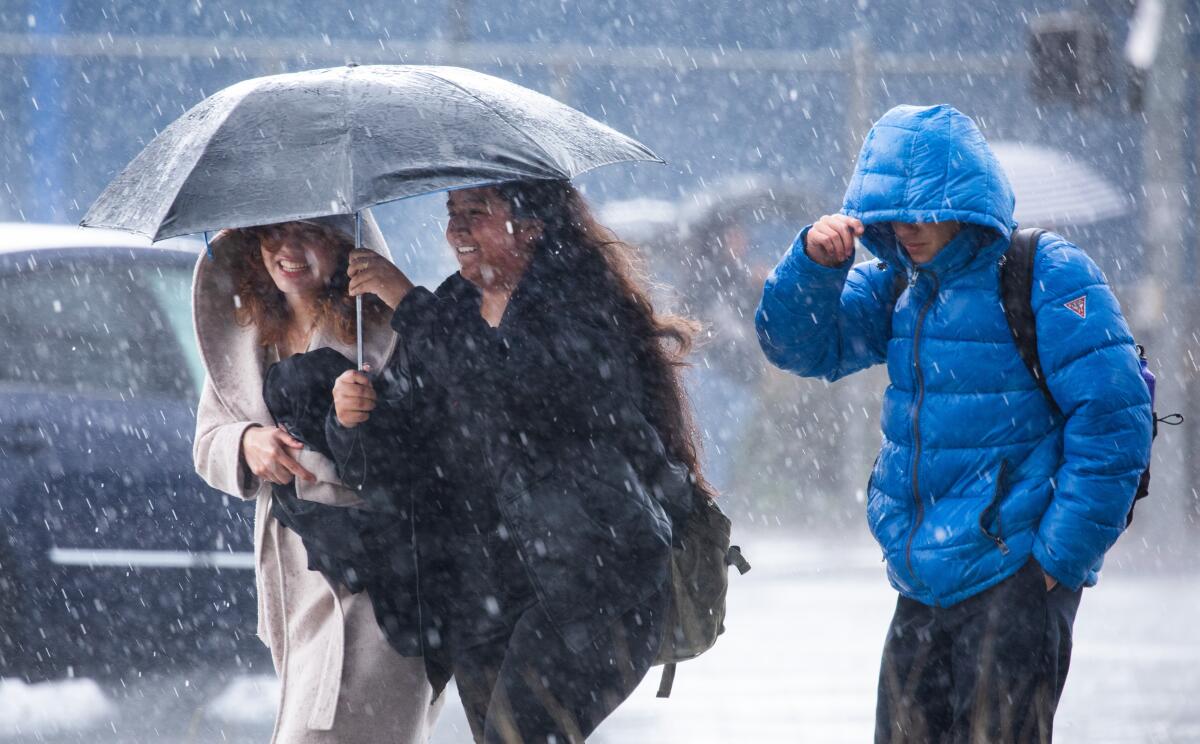A powerful bomb cyclone is forecasted to affect the West Coast of the U.S. this week, with significant impacts expected from Tuesday to Thursday. This rapidly intensifying storm is set to bring heavy rain, strong winds, and potentially more than a foot of precipitation in Northern California and Southern Oregon. Coastal regions may experience wind damage, while higher elevations could see heavy snowfall. Residents in flood-prone areas are urged to monitor warnings closely due to flash flood risks.
Preparing for a power outage during a bomb cyclone, particularly in a place like Washington where weather can already be challenging, requires planning and proactive measures. Here’s a comprehensive guide:
Before the Storm
- Stay Informed
- Monitor local weather updates from trusted sources such as the National Weather Service.
- Sign up for emergency alerts via mobile apps or local government websites.
- Create an Emergency Kit
Include the following:- Flashlights and extra batteries (avoid candles to reduce fire risk).
- Portable phone chargers or power banks.
- A battery-powered or hand-crank radio.
- Non-perishable food and a manual can opener.
- Bottled water (one gallon per person per day for at least three days).
- First aid supplies and medications.
- Warm clothing, blankets, and sleeping bags.
- Cash, as ATMs may not work.
- Backup keys for your home and car.
- Prepare Your Home
- Trim trees near power lines or your house to prevent damage.
- Insulate windows and doors to retain heat.
- Stock up on firewood if you have a wood-burning stove or fireplace.
- Test your generator, if you have one, and ensure it’s fueled and ready.
- Unplug sensitive electronics to avoid damage from power surges.
- Fuel Up
- Fill your car’s gas tank (gas stations may be closed during outages).
- Have extra propane for grills or camp stoves if they’re safe to use.
- Water Supply
- Fill bathtubs or large containers with water for washing and flushing if you rely on a pump that needs electricity.
During the Storm
- Stay Indoors
- Avoid travel unless absolutely necessary.
- Stay away from windows to avoid injury from broken glass.
- Conserve Energy
- Keep the fridge and freezer closed as much as possible. A closed refrigerator can keep food cold for about 4 hours, and a full freezer for 48 hours.
- Use flashlights instead of candles for safety.
- Stay Warm Safely
- Wear layers, use extra blankets, and close off unused rooms to conserve heat.
- Avoid using ovens or grills for heating indoors due to carbon monoxide risks.
- Communication
- Use text messaging or social media for communication instead of voice calls to conserve phone battery life.
- Turn off non-essential apps on your phone to save battery.
- Generator Safety
- Operate generators outdoors and away from windows to avoid carbon monoxide poisoning.
After the Storm
- Check for Hazards
- Avoid downed power lines and report them immediately.
- Inspect your home for damage.
- Restock Supplies
- Replace used items in your emergency kit to prepare for future outages.
- Stay Connected
- Continue monitoring news for updates on power restoration efforts and road conditions.
- Food Safety
- Discard perishable food items if the power was out for more than 4 hours and the refrigerator temperature exceeded 40°F.

Vinod Ram has been in Software Industry since 2006 and has experience of over 16 years in Software Development & Project Management domain specialised majorly in LAMP stack & Open Source Technology, building enterprise level Web based Application, Large Database driven and huge traffic Websites and Project Management.
He loves to write information articles and blog to share his knowledge and experience with the outside world and help people to find solution for their problems.
